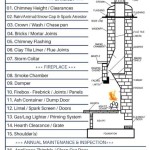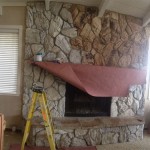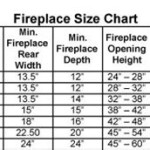Damper Operation and Fireplace Insert Compatibility: A Comprehensive Overview
Fireplace inserts are self-contained heating appliances designed to be installed within an existing fireplace. They offer improved heating efficiency compared to traditional open fireplaces. One critical aspect of their functionality, and often a source of confusion, revolves around the fireplace damper. The damper, a movable plate located in the chimney flue, serves to regulate airflow. Understanding the relationship between dampers and fireplace inserts is crucial for safety, efficiency, and optimal performance.
This article will delve into the workings of a damper, its typical operation with a traditional fireplace, and how its function and relevance change when a fireplace insert is installed. It will also address common questions, potential problems, and best practices concerning damper management with various types of fireplace inserts. Furthermore, it will explore the potential safety issues that can arise from improper damper use or neglect.
Understanding the Traditional Fireplace Damper
In a traditional open fireplace, the damper plays a significant role in controlling airflow. When the fireplace is not in use, the damper is closed to prevent drafts from entering the home and to keep warm air from escaping up the chimney. This minimizes heat loss during the colder months and enhances overall energy efficiency. Conversely, when a fire is burning, the damper must be opened to allow for proper ventilation. The open damper allows combustion gases, including carbon monoxide, smoke, and other byproducts, to exit the home through the chimney flue.
Dampers in traditional fireplaces typically come in two primary designs: throat dampers and top-mounted dampers. Throat dampers are located directly above the firebox, within the fireplace throat. They are often operated by a lever or handle. Top-mounted dampers, also known as chimney dampers, are installed at the top of the chimney flue. They offer a tighter seal than throat dampers and are generally considered more effective at preventing heat loss and drafts. Top-mounted dampers can be operated by a chain that hangs down into the firebox.
The correct operation of the damper is essential for a safe and efficient fire. An improperly opened damper can lead to smoke entering the home, increased creosote buildup in the chimney, and potentially dangerous carbon monoxide poisoning. Conversely, a damper left open when the fireplace is not in use results in significant heat loss and increased energy costs.
Regular inspection and maintenance of the damper are necessary to ensure its proper functionality. Creosote buildup, rust, and general wear and tear can impede the damper's ability to open and close effectively. A professional chimney sweep can inspect and clean the damper as part of routine chimney maintenance.
The Role of the Damper with a Fireplace Insert
The installation of a fireplace insert significantly alters the function and importance of the existing fireplace damper. Fireplace inserts are designed to operate as closed combustion systems, meaning they draw air from outside the living space for combustion and vent the exhaust gases directly through a dedicated flue liner that is connected to the insert. This liner typically runs up the existing chimney.
Because the insert utilizes its own sealed combustion chamber and venting system, the original fireplace damper effectively becomes redundant. In many cases, the damper is recommended to be permanently locked in the open position after the insert is installed. This is to ensure that the dedicated flue liner is not obstructed and that exhaust gases can vent properly. Locking the damper open can prevent accidental closure, which could lead to dangerous carbon monoxide buildup inside the home.
However, the specific recommendation regarding the damper position can vary depending on the type of fireplace insert installed and local building codes. Some manufacturers recommend removing the damper entirely, while others suggest keeping it in the open position but ensuring it is securely fixed to prevent accidental closure. It is crucial to consult the insert manufacturer's installation instructions and local codes to determine the appropriate course of action for the specific model.
Furthermore, even with the damper locked open, it still plays a minor role in reducing drafts when the insert is not in use. While the insert itself is designed to be tightly sealed, a completely open chimney flue can still allow some cold air to enter the living space. The open damper might slightly impede this airflow, but it will not provide a complete seal like it would in a traditional fireplace. The primary draft prevention is achieved through the sealed combustion chamber of the insert and the tight connection to the dedicated flue liner.
Potential Problems and Safety Considerations
Incorrect damper management when using a fireplace insert can lead to several potential problems, including reduced heating efficiency, increased creosote buildup, and, most significantly, carbon monoxide poisoning. Leaving the damper closed with an operating insert is a critical safety hazard.
If the damper is closed while the insert is in use, the exhaust gases from the insert will not be able to vent properly through the dedicated flue liner. This can result in a backdraft of smoke and carbon monoxide into the home. Carbon monoxide is a colorless, odorless, and tasteless gas that can be deadly. Symptoms of carbon monoxide poisoning include headache, dizziness, nausea, and confusion. It is crucial to install carbon monoxide detectors in the home, particularly near sleeping areas, and to test them regularly.
Even if the damper is partially open, it can still restrict airflow and lead to inefficient combustion. This can result in increased creosote buildup within the chimney flue. Creosote is a highly flammable substance that can accumulate in the chimney as a byproduct of incomplete combustion. Excessive creosote buildup can increase the risk of a chimney fire.
Another potential problem is damage to the insert or chimney liner. If the damper is closed or partially closed, the increased pressure within the chimney flue can damage the liner or even the insert itself. This can lead to costly repairs and potentially compromise the safety of the heating system.
To prevent these problems, it is crucial to follow the insert manufacturer's instructions regarding damper management. Typically, this involves permanently locking the damper in the open position. It is also important to have the chimney professionally inspected and cleaned regularly, even with a fireplace insert. A qualified chimney sweep can assess the condition of the chimney flue, identify any potential problems, and remove any creosote buildup.
Furthermore, homeowners should be aware of the signs of improper damper operation, such as smoke entering the home, a strong odor of smoke, or a malfunctioning carbon monoxide detector. If any of these signs are present, the fireplace insert should be shut down immediately, and a qualified professional should be consulted to diagnose and resolve the issue.
In conclusion, while the traditional fireplace damper serves a vital function in controlling airflow and preventing heat loss in open fireplaces, its role changes significantly with the installation of a fireplace insert. Understanding the proper damper management techniques for a specific insert model is critical for safety, efficiency, and optimal performance. Consulting the manufacturer's instructions and seeking professional advice from a qualified chimney sweep or installer are essential steps in ensuring the safe and effective operation of a fireplace insert.

How To Use A Fireplace Damper The Right Way

Chimney Liners Usa Fireplace Insert Venting Information

Wood Fireplace Sucks The Heat Out Misterfix It Com

Firepalce Insert Block Off Plate Chimney Liner Depot

What Is A Chimney Damper Full Service

Fireplace Insert Venting Demystified Gas Direct Vent Inserts

Arched And Steel Fireplace Insert Replace Action
Avalon Flushwood Plus Fireplace Insert Friends Of Sun

Using Your Chimney Damper The Correct Way

Types Of Diffe Chimney Dampers Severna Park Pasadena Md
Related Posts








